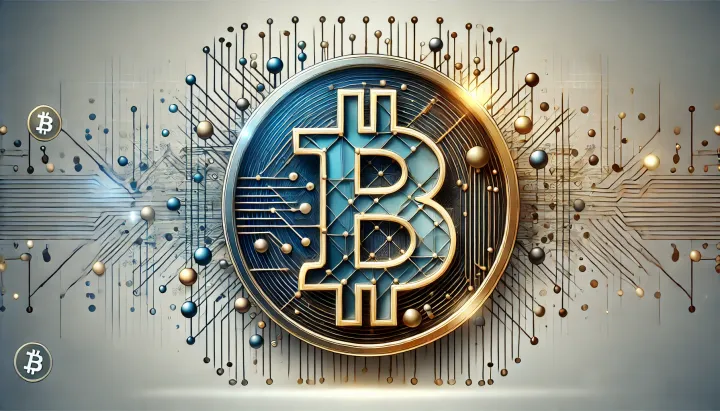Mining Pool Centralization and Bitcoin Governance Risk
The September 16, 2025 episode of TFTC features Jimmy Song explaining how a few mining pools construct most Bitcoin blocks, shifting power away from hashers. He explains how non-consensus changes can reshape incentives under concentration.

- My 'briefing notes' summarize the content of podcast episodes; they do not reflect my own views.
- They contain (1) a summary of podcast content, (2) potential information gaps, and (3) some speculative views on wider Bitcoin implications.
- Pay attention to broadcast dates (I often summarize older episodes)
- Some episodes I summarize may be sponsored: don't trust, verify, if the information you are looking for is to be used for decision-making.
Summary
The September 16, 2025 episode of TFTC features Jimmy Song explaining how a few mining pools construct most Bitcoin blocks, shifting power away from hashers. He distinguishes relay policy, soft forks, and hard forks, showing how non-consensus changes can still reshape incentives under concentration. The episode links fiat-funded miner expansion to centralization and outlines technical and market paths to restore decentralization.
Take-Home Messages
- Block Construction Power: A small set of pools control most block templates, concentrating decision-making.
- Relay vs. Consensus: Relay policy is not consensus, yet concentrated pools can change network behavior through propagation choices.
- Fork Dynamics: Soft-fork tightening can create wipeout risk; hard forks split chains immediately.
- Incentive Distortions: Fiat-funded scaling encourages centralization and miner disengagement from governance.
- Decentralization Paths: Miner-run nodes, miner-template protocols (e.g., Stratum v2-style), and user-level mining dilute pool power.
Overview
Jimmy Song explains that Bitcoin mining pools exist to reduce variance, but Stratum v1 makes pool operators the de facto block template builders. Hashers submit shares and trust pools for accurate accounting, often without running full nodes. This design concentrates both transaction selection and payouts at the pool layer.
A few large pools control most block production, raising risks of fee cartels or transaction filtering. He notes that censorship pressures, including sanctioned lists, become more feasible when chokepoints are known. The discussion emphasizes how concentrated block construction magnifies these vectors.
The episode separates relay policy from consensus rules and clarifies soft- versus hard-fork mechanics. Soft-fork tightening can cause “wipeout” if minority rules lose to the longer chain, while hard-fork loosening splits immediately. Relay policy affects what propagates and can act as a “costly punishment,” raising orphan risk for both sides.
Process legitimacy is central to resilience. Song argues developer-driven relay changes coupled with pool concentration can bypass broader user agreement. He points to fiat-funded expansion and energy centralization as drivers of miner disengagement, while user-level mining and miner-controlled templates could restore balance.
Stakeholder Perspectives
- How can Bitcoin reduce dependence on a few dominant mining pools? Addressing structural concentration is critical to preserve governance legitimacy and network security.
- How vulnerable are centralized pools to government censorship demands? Understanding legal and operational choke points informs mitigation strategies and jurisdictional choices.
- What governance safeguards prevent pools and developers from overriding users? Clear guardrails and processes are needed to keep non-consensus changes from de facto rule-setting.
- How does fiat financing distort incentives for mining expansion? Mapping capital structures to operational choices clarifies why centralization persists and how to counter it.
- What technological innovations best support decentralized mining growth? Identifying scalable, miner-friendly tools enables diffusion that weakens single points of failure.
Implications and Future Outlook
Concentration at the template layer raises the probability that non-consensus policy changes shape outcomes before full social consensus forms. Expect debate to focus on propagation economics, compact-block efficacy, and orphan-risk incentives. Clearer norms for process legitimacy will matter as much as code paths.
Technical remediation centers on miner-template control and broader miner operation of full nodes. Adoption depends on usability, backward compatibility, and demonstrated revenue neutrality or improvement. If costs are low and uptime stable, diffusion can occur without coercion.
Market and policy signals will influence decentralization speed. User-level mining and heat-reuse economics can incrementally re-balance power, while transparency on pool market shares can guide risk monitoring. Coordinated communications on fork risk can reduce user harm in contentious periods.
Some Key Information Gaps
- How can Bitcoin reduce dependence on a few dominant mining pools? Addressing structural concentration is critical to preserve governance legitimacy and network security.
- How vulnerable are centralized pools to government censorship demands? Understanding legal and operational choke points informs mitigation strategies and jurisdictional choices.
- What governance safeguards prevent pools and developers from overriding users? Clear guardrails and processes are needed to keep non-consensus changes from de facto rule-setting.
- How does fiat financing distort incentives for mining expansion? Mapping capital structures to operational choices clarifies why centralization persists and how to counter it.
- What technological innovations best support decentralized mining growth? Identifying scalable, miner-friendly tools enables diffusion that weakens single points of failure.
Broader Implications for Bitcoin
Democratic Resilience and Digital Sovereignty
Mining pool centralization highlights how concentration anywhere in decentralized systems can create governance choke points. Over the next decade, Bitcoin’s ability to resist coercion will serve as a benchmark for broader digital infrastructures seeking democratic resilience. The way Bitcoin handles this challenge may influence future policy on AI networks, cloud platforms, and other distributed technologies.
Precedent for Open-Source Governance
The tension between developers, miners, and users over relay policies underscores unresolved questions of authority in open-source systems. How Bitcoin resolves this struggle will set precedents for governance across open-source projects that underpin critical digital infrastructure. Policymakers and technologists alike will watch to see whether community legitimacy or technocratic decision-making prevails.
Financial System Adaptation
Fiat-funded mining growth reveals the entanglement of legacy credit markets with Bitcoin’s infrastructure. This dynamic suggests that traditional finance will continue shaping how decentralized systems scale, raising questions of systemic risk and resilience (see my Bitcoin Worlds working paper for more on this general line of thought). Longer term, the degree of independence Bitcoin achieves from fiat leverage could influence central bank thinking on digital reserves and systemic risk oversight.
Global Energy Politics
As mining remains energy intensive, centralization amplifies its geopolitical dimension. States may come to view control over major mining pools not only as an economic concern but also as a matter of strategic energy policy. This reframes Bitcoin as part of global energy security debates, alongside oil, gas, and renewables.
Social Contract of Decentralization
The risk that a handful of actors could reshape Bitcoin’s rules challenges the social contract that has underpinned trust in the system. Future legitimacy will hinge on whether stakeholders reaffirm that decentralization means both technical distribution and distributed decision-making. If this balance falters, it could erode confidence not only in Bitcoin but also in decentralized governance more broadly.



Comments ()